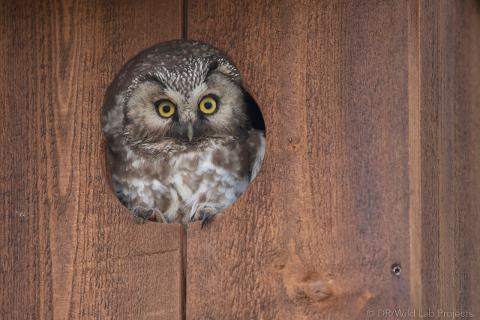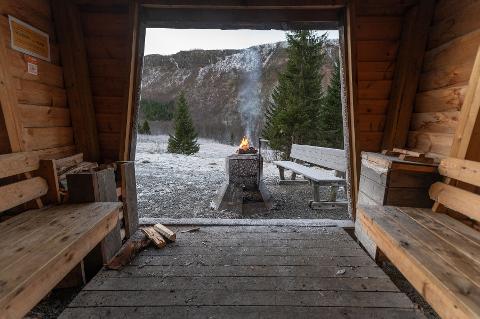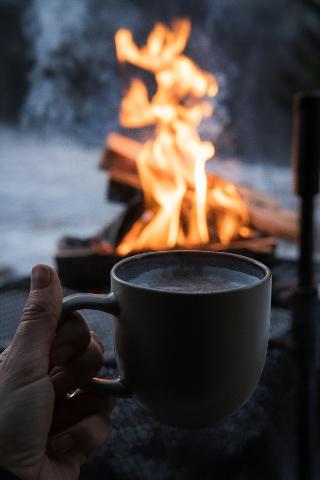NOK 1350
Per PersonIn a nutshell
Where: Near TromsøWhen: All year round
Duration: 4 hours
Meeting time: 9:50 in the city center (outside the Scandic hotel)
Return: 14:00 in the city center
Inclusions: Homemade sandwiches, cookies, hot drinks + snowshoes if needed.
Group size: Small! (4 to 8)
Goal: Provide nesting sites for 3 species of owls and monitor their population.
Missions: Depending on the time of year, we put nest boxes in trees, check them for occupancy and maintenance, and ring owls.
Research partners: The Owl Team and Birdlife Troms
Why is this project important?
Among the several species of owls found in Northern Norway, those who breed in hollow trees face a big problem: natural cavities are rare because trees are usually cut down before they get old. Tengmalm and pigmy owls normally use woodpeckers’ cavities, but woodpeckers are uncommon in young and heavily exploited forests. The story’s background is a familiar one: our extractive relationship to nature puts more and more stress on forests as the demand for wood increases dramatically, and protection efforts are lacking. The Arctic is particularly vulnerable: at high latitudes, the distribution of the forest in the landscape is limited, and trees are often small due to the harsh climate. Also, trees grow slowly, which doesn’t help the forests regenerate. For owls and other species, the consequence can be summarized in two words: habitat destruction, incidentally the major threat to biodiversity in the world.
But there is good news: owls find plenty of food - rodents and birds - in these degraded habitats. Until we accept to let forests grow old, providing artificial nests to owls compensates in part for the lack of natural cavities. Admittedly, it is a short-term and isolated conservation measure that doesn’t solve the source of the problem. Still, this long-term monitoring project has already brought precious knowledge concerning the demography, the local movements, the migration and conservation status of Scandinavian owls. We will also use this citizen science project to raise awareness about habitat loss and convince landowners and managers to change their practices and let patches of forest grow old.
What are the goals of the project?
- Provide artificial nesting sites to Tengmalm, pigmy and hawk owls
- Provide our scientific partner with data and contribute to scientific knowledge
- Learn about owls’ demography, migration, diet, phenology and conservation status
- Encourage forest owners and managers to let patches of forests grow old
Our partners
The Owl Team
Since 1978, a team of local ornithologists have been deploying artificial nests in the Troms region, to help and learn about the Tengmalm, pigmy and hawk owls. Today, almost about 500 nest boxes are being monitored. This exceptional time series has produced a considerable mass of knowledge. It also challenged some widespread ideas concerning the Scandinavian owls’ ecology, behavior, movements and breeding cycles linked to that of their prey (voles, lemming).
But there was one missing piece in this otherwise remarkable puzzle: all the nest boxes were inland, away from the coast. The team was aware of this gap as they suspected the coastal owls to follow different patterns. Wild Lab Projects fills this gap, thereby completing the puzzle. Our observations are merged into the general database, as a contribution to this impressive collaborative effort.
Birdlife Troms
Wild Lab Projects and Birdlife Troms work together to facilitate the realization of this citizen science project. Birdlife helped Wild Lab Projects acquire tools for the construction of nest boxes. Birdlife also helped organize events to communicate about citizen science and this project to its members and to the public.
How you can contribute
Join us for a day in the field !Depending on the time of year, we will…
- Put up nest boxes in trees (all year round)
This we do near Tromsø in forests where the presence of owls is either known or suspected. The nests are only accessible by foot. To carry the nest boxes and the rest of the equipment, we use backpacks and pull trailers on wheels in summer, or sledges in winter when there is snow on the ground.
- Check nest boxes during mating and breeding season (March-May)
In spring, we check all the nest boxes once during the incubation period, and a second time before fledging (i.e. before the chicks leave the nest), using non-invasive methods when checking the nests, to limit disturbance.
- Ring owls (April-May)
We capture the adults and the chicks to ring them (our facilitator is an authorized ringer). This gives precious information about movements and survival. It’s a memorable experience for someone to see an owl from up close. It’s also stressful for a wild animal to be handled by a human, so we proceed quickly and respectfully.- Fix or replace nest boxes (all year round)
Providing potential nest sites is great, but they must be safe for the owls. We make sure they are properly fastened to their tree, rainproof and in good condition. We fix them or replace them if they show signs of wear.These days spent outside with a focus on owls are a fantastic opportunity to learn about these birds. If you are familiar with Tengmalm or pigmy owls in other parts of the world (in the Alps or the Jura for example), be prepare to unlearn all you know about these species, and start from scratch: owls behave very differently in the Arctic where habitat is different and there is constant daylight almost half of the year.
Timing and logistics
Meeting point is at 9:50, in Tromsø city center (outside Scandic hotel). Our facilitator will greet you there, and we'll introduce ourselves. She or he will present the project, the plan for the day and will drive everyone to one of the study sites in the mountains (20-min drive max). Then, together we'll do what needs to be done depending on the time of year. In the middle of the day, we'll take a lunch break (we bring cookies and hot drinks!). Before we go back to Tromsø, we will take some time to debrief about the day, and we will be back to town by 14:00.
What happens next?
The success of this project depends greatly on the contribution of volunteers. There would simply be no citizen science without the contribution of citizen scientists. And this leaves Wild Lab with a big responsibility: to keep the volunteers informed. Soon after your participation, your observations will be shared with our research partner, who will eventually publish the result of their work in scientific journals and other media. The role of Wild Lab is to make sure that these results reach you. Surely, you will appreciate seeing that your contribution has been useful and productive. As for us, reporting is a way to maintain a connection with our volunteers, to keep raising awareness and growing a sense of caring, and to maintain a community of nature advocates. If you have joined one of our projects, you will hear from us.
What you will get from this experience
- Support nature conservation
- Learn new things and new skills
- Spend time in and experience nature
- Contribute to a scientific endeavor
- Engage in a meaningful project
- Feel useful and make a difference
- Meet and spend time with people who have similar interests
- Have fun
- Build social connections
https://wildlabprojects.org/terms-conditions/
https://www.wanderingowl.com/terms-conditions/



